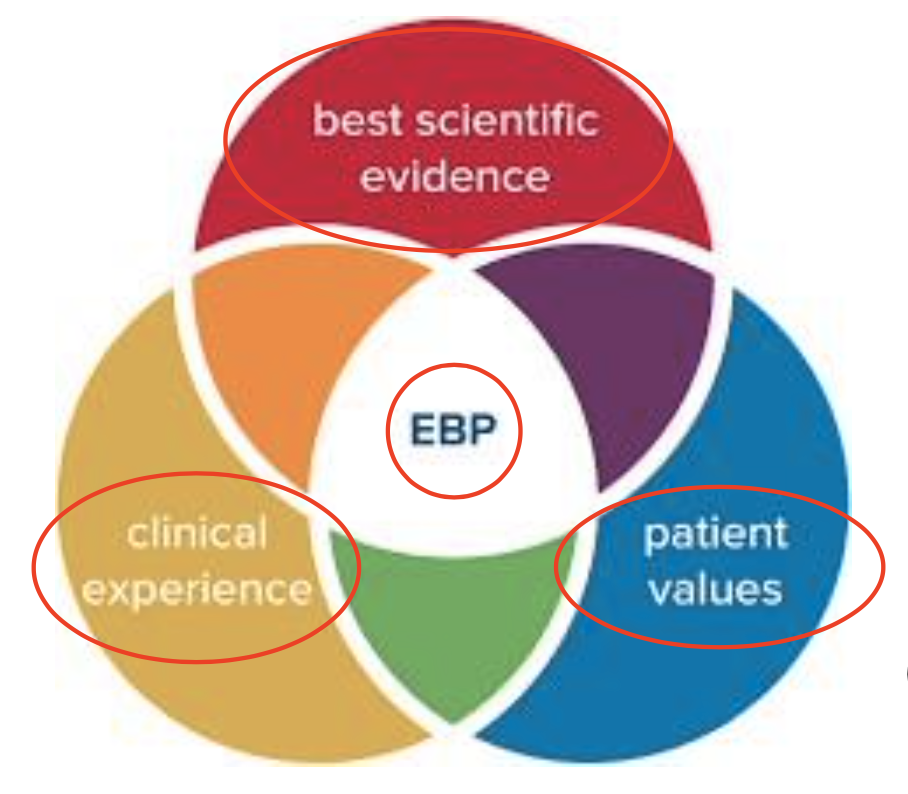Evidence Based Practice integrates :
The best scientific evidence
The clinicians experience
The client’s preferences
EBP promotes and improves:
Effectiveness
Client outcomes
Ethical practice
Integrity
Alignment with latest research
Barriers to implementing EBP:
Access to an understanding of quality evidence
Limited resources
Time constraints
Resistance to change
Sub optimal training
Organisational culture
Levels of Evidence
Expert opinion
Better than a website
Better than a textbook
Substantial capacity for bias
Case study (N = 1)
Just one case
That case may be an outlier
E.g. Phineas Gage
Case Series / Time Series
Measurements are taken before and after an intervention
No control condition exists
E.g. John Snow, cholera outbreak in London
Case-control study
Retrospectively compares a population that has a certain outcome with the population. It doesn't have the same outcome.
E.g. revealing the association between smoking and lung cancer
Cohort study
Longitude and study of a group sharing common characteristics or experience to reveal different outcomes
Similar to a case-control study, but in reverse
Valuable first time, pushing cause and effect relationships
Requires large sample sizes and long follow-up periods
Non-randomised control trial
Compares outcomes for a control group and treatment group
Randomisation is not possible for ethical reasons, e.g. we can't randomise people to smoke or not
Cannot necessarily make causal claims
Randomise control trials (RCT)
The most rigorous design of health research
Randomisation balances, risk, factors, personality traits, identities, etc between the groups
Systematic review (SR)
A literature review that using systematic methods to identify select critically appraise and synthesise all available evidence
Accuracy is contingent on the available evidence base
Cannot include studies that have not been published
Meta – analysis (MA)
An objective statistical method that combines and analyses the results of multiple studies


